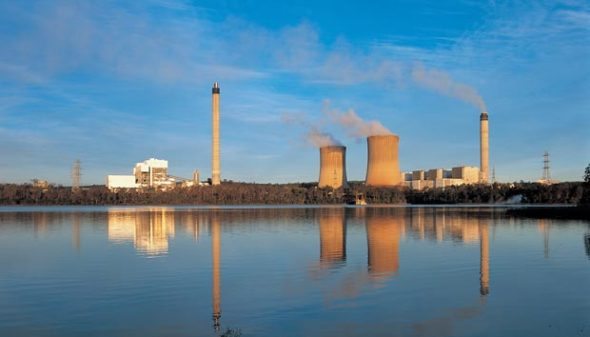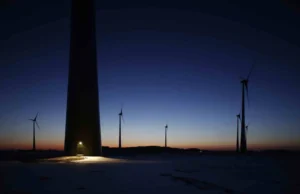Queensland government-owned energy giant Stanwell Corporation says the company’s future must be in renewables and storage rather than coal, in a delicately-worded statement that rang an early death knell for the company’s two coal-fired power plants.
In a statement on Wednesday, chief executive Richard Van Breda gave few concrete details of exactly how the coal-heavy company – which suffered a $720 million plunge in profit last year – would transition away from coal.
But he made it clear he saw no future for coal beyond the lifespan of Stanwell’s two coal plants, which he said the company would use more “flexibly” over the course of the transition, potentially putting them in “standby” mode before they were retired altogether.
“Our Tarong and Stanwell power stations will continue to play an important role as Stanwell’s portfolio transforms,” he said.
“We will operate our coal-fired power stations much more flexibly, in response to market requirements. This may include seasonal storage of our generating units, or placing units into standby mode so they can be quickly returned if the market needs them,” he said.
Tarong and Stanwell are 35 and 25 years old respectively. Given coal plants can last up 50 years, each has some considerable potential life left in it, but will struggle to deliver the flexibility required to co-exist with wind and solar.
So, while Van Breda did not say they would be closed early, his comments could easily be read as a plan to do just that.
In a nod to the intensely political nature of coal closures in coal-rich Queensland, he said the Queensland government-owned company would work with employees and coal-dependent communities to help them transition to the low-carbon future.
The announcement marks a major shift for Stanwell, which has been slower than many of its private sector counterparts to invest in renewables and was one of the first to complain about the potential impacts of rooftop solar.
It currently lists no wind or solar projects among its assets, which are mostly coal, gas and hydro operations, but it has signed some crucial off take agreements, including for the huge Clarke Creek Wind Farm, and last month called for more wind and solar offerings.
The announcement continues a trend in recent months for major coal plant operators – including AGL and Energy Australia – to acknowledge the rapidly changing economic landscape had ended any remaining notion that coal-fired power had a future beyond the retirement of existing plants.
The economic outlook for coal-fired power has rapidly deteriorated as it struggles to compete with the a rapid proliferation of cheap renewably-generated energy. This dynamic prompted AGL to announce it was splitting its business in two last month, while Energy Australia brought forward the closure date of the Yallourn coal plant in Victoria.
Stanwell operates two large coal-fired power stations, the 1,460 megawatt Stanwell Power Station in Central Queensland, and the 1,843 MW Tarong Power Station in southern Queensland. Together they are far and away its biggest energy assets.
Those two power stations account for around 12 per cent of Australia’s approximately 25 gigawatts of coal-fired capacity across 23 plants.
Stanwell also owns four gas plants, the largest of which is the 385 MW, and owns or has a stake in four coal mines which feed its coal plants.
All that makes Stanwell one of Australia’s largest energy companies, and the third biggest scope 1 greenhouse gas emitter behind AGL and Energy Australia, and ahead of Origin. In 2019-20, Stanwell emitted 17.1 million tonnes of carbon dioxide.
Its decision to embrace renewable energy, therefore, means something. But it is coming late to the party.
“Australia is undergoing a major energy transition and it’s happening at a rapid pace,” Van Breda said.
“Over the coming years, Stanwell will respond to the renewable energy needs of our large commercial and industrial customers through the introduction of new low or zero emission generation technologies. We will also strive to play a central role in the emerging green hydrogen industry.”
Queensland is a major coal mining state, but the state government has a target of 50 per cent renewables by 2030, although it still has a long way to go to reach that target, despite the addition of more than 25 solar farms and some big wind farms.
“We are taking early steps to bring our people, communities, unions and government together to put plans in place,” Van Breda said.
“These plans will help ensure that as we eventually retire our coal-fired assets from service, our people have choices in relation to retraining, redeployment and – where it is their preference – retirement.
“The plans our host communities develop in partnership with government, local councils, industry and advocacy groups will ensure the long-term economic resilience of their regions. While the communities themselves must own these plans, we will engage with them throughout the planning process, playing a supporting role and sharing our future plans.”










